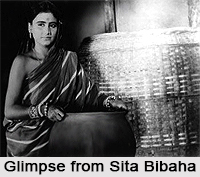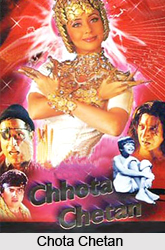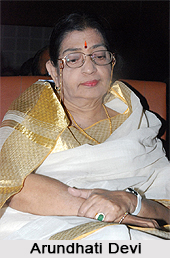 Odia Cinema did not emerge in the era of silent movies. In 1974, the Government of Odisha declared film making and construction of cinema theatres as an industry in the state and 2 years later in 1976, it established the Odisha Film Development Corporation in Cuttack. Also known as Ollywood, the name is a portmanteau of the words Olly and Hollywood.
Odia Cinema did not emerge in the era of silent movies. In 1974, the Government of Odisha declared film making and construction of cinema theatres as an industry in the state and 2 years later in 1976, it established the Odisha Film Development Corporation in Cuttack. Also known as Ollywood, the name is a portmanteau of the words Olly and Hollywood.
History of Odia Cinema
The history of Odia cinema is of a glorious past. The first Odia film "Sita Bibaha" was released in the year 1936 and was an important part of the struggle for a manifestation of Odia cultural identity in celluloid form and it is a movable history. The film was a mythological drama by Mohan Sunder Deb Goswami, who not only directed but also produced and acted in this film.
The pace of Odia film production in the initial years was very slow. After Sita Bibaha, only two films were produced until 1951. A joint consortium of landlords and businessmen who collected funds after 1948 produced those two movies. The 1951 production of Roles to Eight was the first Odia film with an English name. It was released 15 years after the first Odia film, Sita Bibaha. It was the fourth Odia film produced by Ratikant Padhi.
Almost after 15 years of the release of Sita Bibaha another Odia film in the serious stream was released in 1966, Matira Manisha. It bagged the National Award, this film was directed by Mrinal Sen. His example was an encouragement enough for other film directors to follow suit. Awareness for serious filmmakers also received a boost. Social melodramas and mythological films were made in the meantime for the regional audiences. Since then several talented Odia actors and actresses have served the film industry. It is due to their contributions and the efforts on the part of the Odia directors that the Odia films received recognition.
 Some of the Odia films are Lalita (1949), Saptasaiya (1950), Amari Gaan Jhua (1953), Kedar Gouri (1954), Mahalakshmi Pooja (1959), Nua Bou (1962), Sadhana (1964), Manikajodi (1964), Amada Bata (1964), Malajanha (1965), Kaa (1966), Adina Megha (1970), Mana Akasha (1974), Abhimaan (1977), Punar Milan (1977), Jalal Adeni (1977), Agni Pareeksha (1980), Akshi Tritiya (1981), ), Jwain Pua (1982), Babula (1985), Bagula Baguli (1986), Jorjar Mulak Tar (1987), Ashok Sharma (1988), Kanyadaan (1988), Andha Diganta (1989), Akasar Akhi (1989), Asuchi Mo kalia Sune (1989), Dora (1993), Jibana Dhara (1995), Jhilli (1996) and many more in the modern era of Odia Cinema.
Some of the Odia films are Lalita (1949), Saptasaiya (1950), Amari Gaan Jhua (1953), Kedar Gouri (1954), Mahalakshmi Pooja (1959), Nua Bou (1962), Sadhana (1964), Manikajodi (1964), Amada Bata (1964), Malajanha (1965), Kaa (1966), Adina Megha (1970), Mana Akasha (1974), Abhimaan (1977), Punar Milan (1977), Jalal Adeni (1977), Agni Pareeksha (1980), Akshi Tritiya (1981), ), Jwain Pua (1982), Babula (1985), Bagula Baguli (1986), Jorjar Mulak Tar (1987), Ashok Sharma (1988), Kanyadaan (1988), Andha Diganta (1989), Akasar Akhi (1989), Asuchi Mo kalia Sune (1989), Dora (1993), Jibana Dhara (1995), Jhilli (1996) and many more in the modern era of Odia Cinema.
Odia Cinema of Modern Age
One of the most sensitive films made in the 1900s was Malajanha (1965). It was directed by Nitai Palit. This Odia film is a sensitive melodrama about an unmarried couple in which the woman ends up committing suicide because of the persecution of the people of her village. Another musical drama, Arundhati (1967) also made an impact with the audiences. It was directed by Prafulla Sengupta.
Odia Film in National Hemisphere
The first Odia film that bagged the National award was Sri Lokenath in the year 1960; it was the directorial venture of the reputed Odia director Prafulla Sengupta. This was a great achievement as far as Odia films were concerned as the industry till then was in a nascent stage. In this very year Prasantha Nanda also fetched the National Award as best actor for the film Nau Bau. With two National awards in hand the Odia film industry appeared on the national level. Prasantha Nanda went ahead and became one of the most celebrated stars in the Odia film industry. He was an actor, director, screenplay writer, and lyricist and even as a playback singer. He has contributed greatly to the development of the Odia films.






